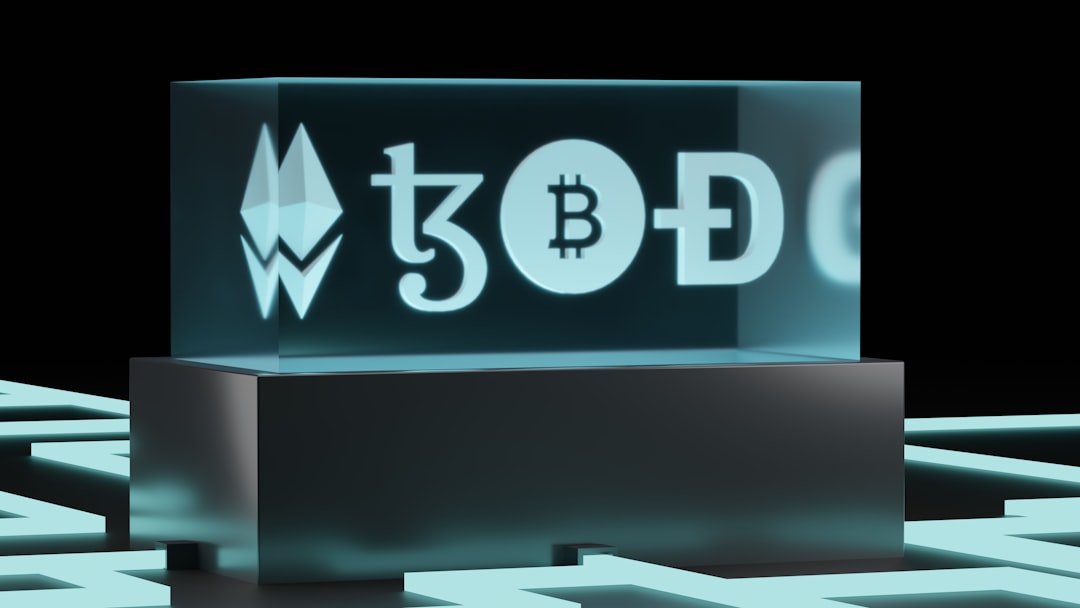NFTs (Non-Fungible Tokens) & virtual showcases have seen a major upsurge in popularity in the art world in recent years. These ideas have transformed our understanding of and interactions with art, providing new opportunities for creators, collectors, and art enthusiasts alike. This article will examine the realm of virtual showcases and NFTs, their significance in the art industry, and their future possibilities.
Key Takeaways
- NFTs are unique digital assets that are changing the way we view and collect art.
- Virtual showcases are becoming increasingly popular and are having a significant impact on the art market.
- Curating virtual showcases requires a different approach than traditional exhibitions, and technology plays a crucial role.
- There are many rising NFT artists to watch out for in virtual showcases, and subscribing to the NFT Newsletter can keep you up to date.
- Virtual showcases and NFTs represent a new frontier in the art world, with exciting possibilities for the future.
Unique digital assets kept on a blockchain are called Non-Fungible Tokens, or NFTs. In contrast to fungible cryptocurrencies like Bitcoin and Ethereum, which can be traded one-to-one, NFTs signify ownership of a particular good or piece of content. Virtual real estate, music, videos, and digital art are all examples of this. NFTs are important in the art market because they can authenticate & prove ownership of digital artworks. Digital art used to be easily replicable and didn’t have the provenance or scarcity of physical artworks.
This has been altered by NFTs, which offer a means of confirming the uniqueness and ownership of digital works. For digital artists, this has created an entirely new market that has enabled them to profit from their creations & connect with a worldwide audience. Within the art world, NFTs have had a significant impact. We have seen a number of well-publicized NFT sales in recent years that have inspired discussion and drawn attention.
For instance, at a Christie’s auction, the digital artist Beeple sold an NFT piece of art called “Everydays: The First 5000 Days” for an astounding $69 million. With this sale, Beeple became one of the most well-known digital artists, and it also introduced NFTs to a wider audience in the art market. Thanks in large part to the COVID-19 pandemic, which restricted in-person interactions and meetings, virtual showcases have become exceptionally popular in recent years. These showcases give artists a digital platform to display their work and give art lovers a way to view and interact with art from the comfort of their own homes. Comparing virtual showcases to traditional physical galleries, there are a number of benefits.
First of all, they remove barriers based on location, enabling global connections and cooperation between collectors and artists. As a result, the art world is now more inclusive and diverse, and artists from underrepresented areas are becoming more well-known. Virtual showcases also give viewers a distinct and engaging experience. Virtual reality (VR) and augmented reality (AR) technologies enable visitors to engage with artwork, explore virtual galleries, and even experience virtual openings & events. Because of this, the lines separating the real and virtual worlds are becoming increasingly hazy in our perceptions of and interactions with art.
Virtual exhibition platforms have had a substantial effect on the art market. They have made the world of art more approachable and democratic for a larger range of people. Virtual exhibitions have also given artists the freedom to try out novel formats and media, stretching the bounds of conventional artistic methods. As a result, artists are investigating the potential of digital art, interactive installations, and immersive experiences, sparking a surge of creativity and innovation.
In order to put together a coherent and captivating exhibition, carefully choosing & arranging the artwork is a necessary part of curating virtual showcases. Curators take into account a number of elements, including the exhibition’s overall narrative, theme, medium, and style. By taking the audience on a visual journey and arousing emotions and stimulating dialogue, they hope to create a carefully curated experience. Virtual showcases are special because they aren’t restricted by physical space.
Because virtual showcases do not have spatial restrictions like physical galleries do, they can host bigger, more ambitious exhibitions. Artists are able to take viewers into new realms with their immersive installations, interactive experiences, & even virtual worlds. A level of interaction and participation not possible in conventional galleries is also provided by virtual showcases. Zooming in on artwork, reading thorough descriptions, watching videos, & even buying NFTs straight from the exhibition are all available to visitors.
A dynamic and immersive experience is created by the skillful blending of technology and art, captivating viewers and enticing them to explore further. Numerous online exhibitions have been acknowledged for their creative curation and distinctive attributes. As an illustration, NFT artists’ digital art is displayed in the virtual Museum of Crypto Art (MOCA). It provides a thorough platform for artists & enthusiasts to interact with and engage with digital art by offering a variety of exhibitions, events, and educational programs. With the emergence of NFTs, a new wave of artists has emerged, pushing the limits of digital art & investigating uncharted territory. The distinctive styles, methods, & creative use of technology of these up-and-coming NFT artists are starting to garner attention.
One such artist is XCOPY, who is well-known for his futuristic and dystopian works of art that examine consumerism, technology, and identity. His digital animations and collages have become cult favorites and have been shown in a number of online galleries and NFT platforms. Teenage artist Fewocious is another rising star in the NFT art scene. Her vivid and emotive portraits have won her a lot of praise.
Being one of the most sought-after NFT artists, she has captured the attention of audiences and collectors with her dynamic compositions & bold use of color. By testing the limits of conventional artistic methods and investigating novel media & formats, these up-and-coming NFT artists embody the direction of digital art. Their output is evidence of the effectiveness of NFTs in giving artists a stage on which to express themselves and engage with a worldwide audience. For artists to create, display, and sell their digital artworks, technology is essential to virtual showcases and NFTs. NFTs are built on top of blockchain technology in particular, which offers a transparent & decentralized marketplace for the creation and exchange of digital assets.
Our perception of and interaction with art has changed dramatically as a result of the use of virtual reality (VR) and augmented reality (AR) technologies in virtual showcases. Virtual reality (VR) enables spectators to explore virtual galleries, navigate virtual installations, and even engage with virtual artwork. Contrarily, augmented reality (AR) lets users see virtual artworks in their actual surroundings by superimposing digital content over the real environment. Technology has had a huge impact on the art world. It has democratized the production and dissemination of art, enabling creators to earn money from their creations and connect with a worldwide audience.
Moreover, it has given art enthusiasts new opportunities, enabling them to view and purchase pieces from the comfort of their own homes. The experience of viewing virtual showcases has been further improved by creative uses of technology. For instance, some virtual showcases use gamification features that let users solve riddles, find hidden content, and even win prizes. Viewers are drawn in deeper by this immersive and interactive approach to art, which encourages involvement & a sense of connection.
When compared to conventional art collecting techniques, virtual showcases have a few advantages. To begin with, they give art enthusiasts a more open and welcoming platform. Virtual showcases can be viewed by anybody with an internet connection, regardless of where they are or how mobile they are. As a result, the art world is now more accessible to a larger audience, promoting a more inclusive and diverse community.
Art collectors can also enjoy a more customized & interactive experience with virtual showcases. Look closely at the artworks, peruse thorough descriptions, and even have conversations with the artists & other collectors. An even deeper & more satisfying collecting experience results from this degree of involvement and interaction, which also helps the collector comprehend and value the artwork.
Virtual showcases are also a more environmentally responsible & sustainable option for art exhibitions than traditional ones. The carbon footprint of the art industry is decreased by virtual showcases since they do not require physical transportation or infrastructure. This is in line with the emerging global movement for sustainable development and conscientious consumption. Virtual galleries do not, despite these benefits, take the place of seeing art in person.
In a virtual setting, an artwork’s physicality and aura cannot be duplicated. Virtual galleries, on the other hand, provide a fresh and fascinating approach to discover and interact with art, complementing conventional art collecting techniques. Via virtual showcases and NFTs, there is tremendous room for development and innovation. We may anticipate increasingly interactive & immersive virtual experiences as technology develops, obfuscating the distinction between the real world and the virtual one. The future of virtual showcases will be greatly influenced by virtual reality (VR) & augmented reality (AR) technologies, which will give viewers more realistic and captivating experiences.
We should anticipate more NFT integration with the conventional art market. Significant galleries and auction houses have already embraced NFTs by holding special sales and exhibitions. As a result of this integration, digital art and NFT artists will gain greater legitimacy and recognition, which will further spur market expansion.
There is also room for new revenue streams and business models in the future of NFTs and virtual showcases. A consistent source of income for curators & artists could be provided by virtual galleries, which could provide subscription-based access to special exhibitions. Virtual real estate could also be introduced by virtual reality platforms, enabling collectors to showcase their collections of NFT art in virtual mansions and galleries. In the art world, a number of impending virtual showcases and NFT releases are already creating buzz. These events, which promise to present ground-breaking artworks and push the boundaries of digital art, are highly anticipated by artists and collectors.
Virtual showcases & NFTs have a bright future ahead of them, full of opportunities for collectors, enthusiasts, and artists alike. Signing up for the NFT Newsletter is a great way to keep informed about the most recent developments and announcements in the world of virtual showcases and NFTs. Updates on upcoming virtual showcases, new NFT releases, and exclusive interviews with collectors and artists are all provided by the NFT Newsletter. Assuring that they never miss out on the newest trends and opportunities in the art market, subscribers receive early access to limited edition NFT drops and insider information.
The NFT Newsletter recently released updates on upcoming virtual showcases with well-known NFT artists, sneak peeks at exclusive NFT releases, & predictions about what lies ahead for NFTs & virtual showcases in general. Before they are made available to the public, subscribers have the opportunity to purchase rare NFT artworks and take part in virtual events. Art enthusiasts can keep up to date and connected in the fast-paced world of virtual showcases and NFTs by subscribing to the NFT Newsletter. They can interact with a thriving community of collectors and enthusiasts, discover up-and-coming artists, and peruse new exhibitions. In conclusion, NFTs & virtual showcases have risen to prominence in the art world, completely altering the ways in which we view, produce, & acquire art. Digital artists now have a platform to sell their creations and become recognized in the mainstream art market thanks to NFTs.
Digital galleries have opened up the art world to a wider audience and increased accessibility. By fusing technology with virtual exhibitions, art has become more accessible to us and the lines between the real and virtual worlds have become less clear. Future development & innovation in virtual showcases and NFTs are extremely promising. We may anticipate more dynamic and immersive virtual experiences as technology develops.
NFTs will further integrate with the conventional art market, giving digital art credibility and acknowledgment. There will be an explosion of new revenue streams and business models that offer exciting prospects to collectors and artists alike. It is highly advised to subscribe to the NFT Newsletter in order to stay informed & connected in this quickly changing landscape. Art lovers can then investigate the newest trends, find up-and-coming artists, and take part in NFT releases that are only available to them.
For collectors, enthusiasts, and artists alike, virtual showcases and NFTs are here to stay, providing countless opportunities. We should welcome this new frontier in the art world and set out on an adventure of exploration and learning.
Check out this article on the NFT Newsletter that provides 10 simple tips to improve your test-taking skills. Whether you’re a student preparing for exams or a professional taking certification tests, these tips can help you perform better and achieve your desired results. Enhancing your test-taking skills is crucial for success, and this article offers valuable insights to help you excel. Don’t miss out on this informative read! Read more
FAQs
What are virtual showcases?
Virtual showcases are curated exhibitions that feature the best work from rising NFT artists. These showcases are typically hosted online and can be accessed from anywhere in the world.
What is NFT?
NFT stands for Non-Fungible Token. It is a type of digital asset that represents ownership of a unique item or piece of content, such as artwork, music, or video.
Who are rising NFT artists?
Rising NFT artists are artists who are gaining popularity and recognition in the world of NFTs. They may be new to the scene or have been creating NFTs for some time but are just starting to gain wider recognition.
What is the purpose of virtual showcases?
The purpose of virtual showcases is to highlight the best work from rising NFT artists and provide a platform for them to showcase their talent and gain exposure. These showcases also provide an opportunity for collectors and enthusiasts to discover new artists and acquire unique NFTs.
How can I access virtual showcases?
Virtual showcases are typically hosted online and can be accessed through a web browser. Some showcases may require registration or a fee to access, while others may be free and open to the public.
Can I purchase NFTs from virtual showcases?
Yes, virtual showcases often feature NFTs that are available for purchase. Collectors and enthusiasts can acquire these NFTs through various platforms, such as OpenSea, Rarible, or SuperRare.









